聖徳太子 遣隋使と十七条憲法の真実 法隆寺と『三経義疏』の世界
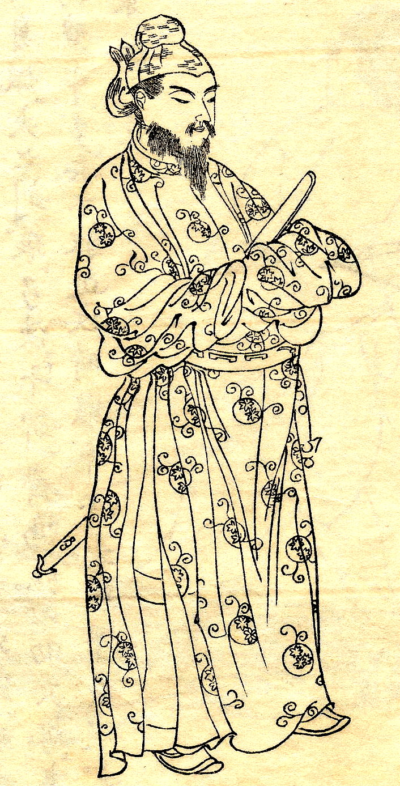
Prince Shotoku: Truths behind the Sending of the Envoy to Sui China and the Seventeen-Article Constitution, and the World of Horyu-ji Temple and the “Sankyogisho”
イントロダクション
聖徳太子の業績は日本史において輝かしいものとされています。
遣隋使による国際関係の構築、十七条憲法に見る政治理念の導入、法隆寺を中心とした文化の隆盛、そして『三経義疏』に表れる仏教哲学の深遠な世界。
これらの真実に迫るためには、歴史の表層だけでなく、その背後にある思想や文化の流れを理解することが不可欠です。
この記事では、これらの要素を解き明かしながら、聖徳太子の実像に迫ります。
聖徳太子の歴史と影響
聖徳太子は、日本の歴史上、最も影響力のある人物の一人として知られています。
彼のレガシーは、政治、文化、宗教の各面で日本社会に深い影響を与えました。
聖徳太子という名前は、彼の死後に尊敬を込めて贈られたもので、彼の本名は厩戸皇子(うまやどのおうじ)でした。
聖徳太子の生涯は、初期の生活から政治への道のりに至るまで、多くの伝説に彩られています。
彼は、推古天皇の摂政として、当時の日本における中央集権体制の確立に貢献しました。
また、十七条憲法の制定者としても知られ、これは日本最古の法令集とされています。
彼の政治哲学は、仏教の教えに深く根ざしており、その哲学は十七条憲法にも反映されています。
遣隋使としての聖徳太子の役割は、東アジアの歴史において重要なものでした。
遣隋使は、日本と隋(中国)との間の外交使節団であり、文化や技術の交流を促進するとともに、
両国の政治的関係を強化しました。聖徳太子の時代には、仏教や中国の制度が日本に導入され、日本の国際的な地位を高める一助となりました。
冠位十二階の創設は、聖徳太子が社会制度にもたらした革新の一例です。
これは、出身や血統に基づく既存の身分制度に代わるもので、個人の能力や功績に応じて官位を与えるシステムでした。
この制度により、より公平な社会が実現され、官僚制の基礎が築かれました。
聖徳太子が建立した法隆寺は、世界最古の木造建築物の一つとして現存し、彼の仏教に対する深い信仰を物語っています。
法隆寺は、聖徳太子が仏教を国教として推し進めたことの象徴でもあります。
また、聖徳太子は『三経義疏』の編纂者としても知られており、仏教経典の解釈に大きな影響を与えました。
聖徳太子の歴史とその影響は、日本のアイデンティティ形成において中心的な役割を果たしてきました。
彼の政治的業績、外交政策、社会制度への革新、そして仏教への貢献は、今日の日本社会における価値観や制度に深く根ざしています。
聖徳太子の遺産は、日本の歴史を理解する上で不可欠なものであり、彼の影響は現代にも引き継がれています。
聖徳太子とは?-日本における偉大なレガシー
聖徳太子は、飛鳥時代における日本の政治家であり、思想家です。
彼の実名は厩戸皇子といい、推古天皇の摂政として活躍しました。
その功績は、今日でも多くの日本人に称賛されています。
彼の生涯は、若くして政治の世界に足を踏み入れたことから始まります。
聡明な皇子として知られ、政治においてもその才能を発揮しました。
特に、遣隋使を派遣して中国との交流を図り、当時の最先端文化や制度を日本に取り入れたことは、東アジアの歴史においても重要な役割を果たしました。
また、社会制度における革新として、冠位十二階を創設しました。
これは、血統ではなく実力や功績に基づいて官位を決定するという、当時としては画期的なシステムであり、社会の平等化を促進する一助となりました。
聖徳太子のもう一つの大きな業績は、十七条憲法の制定です。
これは日本最初の憲法とされ、政治の基本原則や倫理規範を定めたものであり、後の日本の法制度の礎を築きました。
彼の信仰心も厚く、法隆寺の建立に関わるなど、仏教の普及にも尽力しました。
また、仏教経典の解釈を行った『三経義疏』を著し、仏教哲学にも深い洞察を示しています。
聖徳太子の遺したレガシーは、現在の日本文化や社会にも色濃く影響を与えており、彼の思想や業績は、今も尊敬と研究の対象となっています。
その偉大な足跡は、日本史における重要な一章として、未来に向けて語り継がれていくことでしょう。
Introduction
Prince Shotoku’s achievements are considered illustrious in Japanese history. His contributions include establishing international relations through the sending of envoys to Sui China, introducing political ideals in the Seventeen-Article Constitution, fostering cultural prosperity centered around Horyu-ji Temple, and the profound world of Buddhist philosophy found in the “Sankyogisho.”
To uncover these truths, it is essential to understand not only the surface of history but also the underlying currents of thought and culture. This article delves into these elements while approaching the real persona of Prince Shotoku.
History and Influence of Prince Shotoku
Prince Shotoku is renowned as one of the most influential figures in Japanese history, leaving a deep impact on politics, culture, and religion.
The title “Prince Shotoku” was bestowed upon him posthumously; his actual name was Prince Umayado.
His life is adorned with legends, beginning from his early years to his path into politics. He significantly contributed to establishing a centralized government system in Japan as the regent to Empress Suiko.
He is also recognized as the architect of the Seventeen-Article Constitution, the oldest set of laws in Japan, rooted deeply in Buddhist teachings.
Prince Shotoku’s role as an envoy to Sui China played a crucial role in East Asian history. The envoy facilitated cultural and technological exchanges between Japan and China, strengthening political relations between the two countries. During Prince Shotoku’s era, Buddhism and Chinese systems were introduced to Japan, elevating its international status.
The creation of the Twelve-Level Cap and Rank System is an example of the innovations Prince Shotoku brought to the social system. This system replaced the existing hierarchical system based on lineage with one that granted official ranks based on personal abilities and achievements, fostering a more equitable society and laying the foundation for a bureaucratic system.
Horyu-ji Temple, established by Prince Shotoku, stands as one of the world’s oldest wooden structures, symbolizing his profound faith in Buddhism and his efforts to promote it as the state religion.
Furthermore, Prince Shotoku is known as the compiler of the “Sankyogisho,” which greatly influenced the interpretation of Buddhist scriptures.
Prince Shotoku’s history and influence have played a central role in shaping Japan’s identity. His political achievements, diplomatic policies, social innovations, and contributions to Buddhism are deeply rooted in today’s Japanese values and systems.
Prince Shotoku: A Great Legacy in Japan
Prince Shotoku was a statesman and philosopher in Asuka-period Japan.
Known originally as Prince Umayado, he served as regent to Empress Suiko and his contributions are revered by many Japanese people today.
His life began with early involvement in politics, where his wisdom and talents shone brightly.
Notably, his dispatching of envoys to Sui China for cultural exchange marked an important milestone in East Asian history.
Moreover, his innovation in social systems, such as the establishment of the Twelve-Level Cap and Rank System, was revolutionary for its time, promoting social equality based on merit rather than lineage.
Another major accomplishment was the creation of Japan’s first constitution, the Seventeen-Article Constitution, which established fundamental principles of governance and ethical norms, laying the groundwork for Japan’s legal system.
Prince Shotoku’s deep faith led him to contribute significantly to Buddhism, including the establishment of Horyu-ji Temple.
He also authored the “Sankyogisho,” which interpreted Buddhist scriptures and demonstrated profound insights into Buddhist philosophy.
Prince Shotoku’s legacy continues to influence Japanese culture and society today, as his thoughts and achievements remain subjects of respect and study.
His remarkable footprint constitutes a pivotal chapter in Japanese history, ensuring his story will continue to be passed down for generations to come.

Kamakura Period Sculpture: Standing Statue of Prince Shōtoku (Owned by the Nara National Museum)
聖徳太子の生涯-初期の生活から政治への道
聖徳太子は、飛鳥時代の日本を代表する政治家であり、文化の発展にも大きく寄与した人物です。
彼の名は、日本史上において重要なレガシーを残しています。
聖徳太子として知られる彼は、実は厩戸皇子として生まれ、若干の年齢で政治の世界に足を踏み入れました。
その政治的手腕は、遣隋使を派遣し、中国との外交関係を築くことで、東アジアにおける日本の地位を高める一助となりました。
彼の政治理念は、冠位十二階の制度を創設することで具現化され、これは日本の社会制度に革新をもたらしました。
この制度により、出身や血統に関わらず、実力や功績によって官位を定めることが可能となり、社会の流動性を高める一因となりました。
また、聖徳太子は十七条憲法を制定し、政治の道徳的基盤を築きました。
これは、政治家や官僚に対する倫理規範を定めたもので、後の日本の政治文化に大きな影響を与えました。
仏教に深い造詣を持ち、法隆寺を建立するなど、宗教面でも大きな足跡を残しています。
法隆寺は、現存する世界最古の木造建築物としても知られ、聖徳太子の仏教への深い信仰心を物語っています。
学問にも熱心で、特に『三経義疏』の編纂に関わったことは、日本における仏教学の基礎を築いたとも評価されています。
その知識と智慧は、政治だけでなく文化や教育の面でもその才能を発揮しました。
聖徳太子の生涯は、初期の生活から政治への道を辿り、日本の歴史において多大な影響を残すものでした。
彼の業績は、今もなお日本人の心に深く刻まれており、その精神は後世に継承されています。
聖徳太子の偉大なる遺産は、日本文化の礎として、永遠に語り継がれるでしょう。
The Life of Prince Shōtoku – From Early Years to Political Leadership
Prince Shōtoku is renowned as a prominent statesman of Japan’s Asuka period, contributing significantly to the cultural development of the era.
Originally known as Prince Umayado, he entered the political arena at a young age, leaving a profound legacy in Japanese history.
Prince Shōtoku, recognized under his revered title, played a pivotal role in diplomacy by dispatching emissaries to the Sui Dynasty in China, thereby enhancing Japan’s position in East Asia.
His political philosophy materialized through the establishment of the Twelve-Level Cap and Rank System, innovating Japan’s societal structure. This system enabled individuals to attain official ranks based on merit rather than birth, fostering social mobility.
Furthermore, Prince Shōtoku enacted the Seventeen-Article Constitution, laying the ethical foundation for governance. This document set ethical standards for politicians and bureaucrats, significantly influencing Japan’s political culture thereafter.
Deeply immersed in Buddhism, he made significant religious contributions, including the establishment of Hōryū-ji Temple, renowned as one of the world’s oldest extant wooden structures, a testament to his profound faith in Buddhism.
He was also a diligent scholar, particularly noted for his involvement in compiling the “Commentaries on the Three Sutras,” which laid the groundwork for Buddhist studies in Japan.
His knowledge and wisdom extended beyond politics, enriching culture and education throughout his tenure.
The life of Prince Shōtoku, from his formative years to his political ascent, left an indelible mark on Japanese history.
His achievements resonate deeply in the hearts of the Japanese people today, and his spirit continues to be revered and passed down through generations.
Prince Shōtoku’s enduring legacy will forever be cherished as the cornerstone of Japanese culture, ensuring his story is perpetually told.

Statue of Prince Shōtoku (Asuka-dera Temple)
遣隋使としての外交-東アジアの歴史における役割
遣隋使としての外交は、東アジアの歴史において重要な役割を果たしました。
聖徳太子のもと、日本は初めて正式な外交使節団を隋に派遣。
これにより、日本と中国との間で文化や技術の交流が促進されたのです。
聖徳太子は、この外交政策を通じて、日本の政治体制や社会制度、さらには文化面においても大きな影響を与えた人物として知られています。
彼の政策の一環として創設された冠位十二階は、社会制度における革新的な試みでした。
これにより、出自ではなく実力や功績に基づいた位階制度が確立され、より公平な社会の実現に寄与したのです。
また、聖徳太子は十七条憲法を制定し、政治の基本的な原則を定めました。
これは、日本の統治システムにおける法の支配を確立する上での大きな一歩となりました。
聖徳太子が建立した法隆寺は、彼の仏教への深い帰依を示すものであり、日本最古の木造建築物として現存しています。
法隆寺は、仏教美術の宝庫としても知られ、聖徳太子の宗教に対する貢献を今に伝えています。
さらに、聖徳太子は『三経義疏』の編纂にも関わり、仏教教義の普及と理解を深めるために尽力しました。
聖徳太子の時代に始まった遣隋使は、その後も続く遣唐使へと発展し、日本の国際関係や文化発展において、不可欠な要素となりました。
この外交政策は、東アジアにおける日本の地位を高めると同時に、中国や朝鮮半島との関係を深め、多様な文化的交流を実現する基盤を築いたのです。
聖徳太子の遺した遺産は、今日の日本社会においてもその価値を色褪せることなく保ち続けています。
冠位十二階の創設-社会制度への革新
日本の歴史において、聖徳太子は革新的な政治家として知られています。
彼が生み出した制度の中でも、特に冠位十二階は社会制度における大きな変革とされています。
この制度は、出身や家柄ではなく、実力や功績に基づく冠位を定めるもので、当時の階級社会における地位の固定化を打破する試みでした。
聖徳太子は、遣隋使として中国との外交においても重要な役割を果たしました。
その経験を生かし、日本の政治体系や文化に多大な影響を与えることになります。
また、十七条憲法の制定によって、政治の基本原則を定めたことも、彼の業績として広く認識されています。
法隆寺の建立は、聖徳太子の仏教への深い信仰心を物語っており、日本最古の木造建築物としてもその価値が認められています。
さらに、『三経義疏』の著作を通じて、仏教教義の解釈と普及に努めたことは、当時の日本における仏教の理解を深める上で重要な役割を果たしました。
聖徳太子のこれらの業績は、日本の歴史だけでなく、東アジア全体の文化や政治においても大きな足跡を残しています。
冠位十二階の創設は、その中でも特に社会制度における革新的な試みとして、今日まで評価され続けているのです。
Diplomacy as Envoy to Sui China – Role in East Asian History
Diplomacy as envoy to Sui China played a crucial role in East Asian history.
Under Prince Shōtoku’s leadership, Japan dispatched its first official diplomatic mission to the Sui dynasty.
This facilitated cultural and technological exchanges between Japan and China.
Prince Shōtoku, renowned for his diplomatic policies, exerted significant influence on Japan’s political structure, social systems, and cultural development.
The creation of the Twelve Level Cap and Rank System as part of his policies was an innovative initiative in social reform.
This system allowed for positions based on merit rather than lineage, contributing to a more equitable society.
Furthermore, Prince Shōtoku established the Seventeen Article Constitution, setting forth fundamental principles of governance.
This marked a significant step in establishing the rule of law within Japan’s governing system.
The construction of Hōryū-ji Temple under Prince Shōtoku’s patronage reflected his deep devotion to Buddhism, standing today as one of the world’s oldest wooden structures.
Hōryū-ji Temple is renowned not only as a treasure trove of Buddhist art but also as a testament to Prince Shōtoku’s contributions to religion.
Additionally, Prince Shōtoku’s involvement in compiling the “Commentaries on the Three Sutras” aimed to deepen the understanding and spread of Buddhist philosophy.
The diplomatic missions initiated under Prince Shōtoku eventually evolved into the subsequent missions to Tang China, becoming integral to Japan’s international relations and cultural development.
These diplomatic efforts not only elevated Japan’s status in East Asia but also strengthened relations with China and the Korean Peninsula, laying the foundation for diverse cultural exchanges.
Prince Shōtoku’s legacy continues to hold immense value in Japanese society today.
Establishment of the Twelve Level Cap and Rank System – Innovation in Social Systems
In Japanese history, Prince Shōtoku is revered as an innovative statesman.
Among the systems he introduced, the Twelve Level Cap and Rank System is particularly noted for its transformative impact on social structure.
This system established ranks based on merit and achievement rather than birth or lineage, challenging the entrenched class divisions of the time.
Prince Shōtoku’s pivotal role in diplomacy with China as envoy to the Sui dynasty underscored his importance in shaping Japan’s political system and culture.
Furthermore, his establishment of the Seventeen Article Constitution is widely recognized as a significant contribution to political principles.
The construction of Hōryū-ji Temple exemplified Prince Shōtoku’s deep faith in Buddhism and is celebrated as Japan’s oldest wooden structure of historical significance.
Moreover, his scholarly work on the “Commentaries on the Three Sutras” played a crucial role in enhancing the understanding of Buddhist doctrines in Japan at that time.
Prince Shōtoku’s achievements left a profound impact not only on Japanese history but also on the broader cultural and political landscape of East Asia.
The establishment of the Twelve Level Cap and Rank System stands out as a pioneering initiative in social reform, continuing to be esteemed to this day.
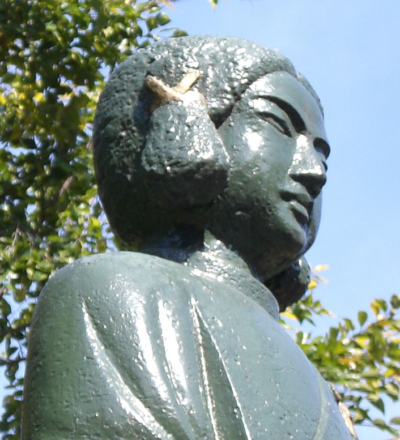
Statue of Prince Shōtoku at 16 Years Old (Shin-Yakushi-ji Temple)
聖徳太子の政治思想と文化貢献
聖徳太子は、日本の歴史において政治と文化の両面で顕著な足跡を残した人物です。
彼の政治思想の中核をなすのは、十七条憲法に見られます。
この憲法は、中央集権化を進めるための基本的な道徳規範として制定され、政治の公正と民衆の和合を促進する目的がありました。
各条文は、儒教の教えに基づく倫理観と仏教の平等思想が融合したもので、統治者と被統治者の関係を新たに定義しました。
また、聖徳太子は仏教の普及にも尽力し、「三経義疏」の編纂を通じて学問と宗教の融合を図りました。
この文献は、仏教経典の解釈を日本の文脈に合わせて説明したものであり、仏教の理解を深める上で重要な役割を果たしました。
彼の学問への貢献は、当時の知識層に大きな影響を及ぼし、仏教の教えが広く受け入れられるきっかけを作りました。
法隆寺の建立は、聖徳太子の文化貢献の中でも特に際立っています。
この寺院は、仏教の聖地としてだけでなく、政治的な象徴としても機能しました。
法隆寺は、仏教芸術の発展に寄与するとともに、日本における仏教文化の中心地となり、後世に多大な影響を与えることとなりました。
遣隋使の派遣は、外交政策の一環として重要な役割を果たしました。
この使節団は、隋との関係強化と文化技術の導入を目的としており、日本の国際的な地位を高めると共に、中央集権化の進展にも貢献しました。
冠位十二階の制度は、身分制度を超えた官位の付与を可能にし、能力に基づく人事制度の導入を促進しました。
この制度により、社会の流動性が高まり、統治機構の効率化が図られました。
聖徳太子の政治思想と文化貢献を総合的に見ると、彼は日本の歴史の中で、統治体制の強化と文化の発展を同時に推進した稀有な存在であると言えます。
その遺産は今日に至るまで、日本の国家形成と文化的アイデンティティに大きな影響を与え続けています。
Political Thought and Cultural Contributions of Prince Shōtoku
Prince Shōtoku left a significant legacy in both politics and culture throughout Japanese history.
Central to his political thought is the Seventeen-Article Constitution, which was established as a fundamental ethical code to advance centralization and promote political justice and social harmony.
Drawing on Confucian ethics and Buddhist egalitarianism, each article redefined the relationship between rulers and the ruled.
Additionally, Prince Shōtoku dedicated himself to the spread of Buddhism, compiling the “Commentaries on the Three Sutras” to integrate scholarship with religious teachings tailored to Japan’s context.
His contributions to academia profoundly influenced the intellectual elite of his time and paved the way for wider acceptance of Buddhist doctrines.
Among his cultural contributions, the construction of Hōryū-ji temple stands out prominently.
This temple not only served as a Buddhist sacred site but also as a political symbol, contributing significantly to the development of Buddhist art and establishing itself as a center of Buddhist culture in Japan, influencing future generations.
The dispatch of envoys to the Sui Dynasty played a crucial role in his diplomatic policies.
This diplomatic mission aimed to strengthen ties with Sui China and introduce cultural and technological advancements, elevating Japan’s international status and advancing centralization.
The Twelve-Level Cap and Rank System enabled merit-based appointments beyond social status, enhancing social mobility and streamlining governance.
Prince Shōtoku’s political thought and cultural contributions epitomize his rare role in Japanese history, simultaneously bolstering governance and fostering cultural development.
His legacy continues to profoundly impact Japan’s national formation and cultural identity to this day.

Dream Hall (Horyu-ji Temple)
十七条憲法の成立とその内容
聖徳太子は、飛鳥時代の政治家であり、仏教の広まりにも大きく寄与した人物です。
彼の政治思想は、十七条憲法に具現化されています。
この憲法は、日本最初の憲法とされ、国家統治の基本的な原則を定めた歴史的文書です。
その内容は、政治の基盤を宗教的な道徳に置き、和をもって貴しとする日本の精神を強調しています。
また、聖徳太子は『三経義疏』の著者としても知られ、仏教経典の解釈に大きな足跡を残しました。
学問と宗教の融合を図り、当時の日本における仏教の理解を深めることに貢献したのです。
彼の文化貢献は、法隆寺の建立にも表れています。
法隆寺は、聖徳太子が建立したとされ、仏教文化の中心地としての役割を果たしました。
この寺院は、日本の仏教建築の傑作として、後世に大きな影響を与えています。
聖徳太子の時代には、遣隋使を派遣して中国との交流を図り、冠位十二階を制定して官位制度を整備するなど、国際的な視野を持ちつつ国内の体制を整えることにも力を注ぎました。
これらの政策は、日本の国家形成において重要な役割を果たしたと評価されています。
『三経義疏』と仏教への貢献-学問と宗教の融合
聖徳太子は、日本の歴史上、最も影響力のある政治家の一人であり、彼の政治思想と文化への貢献は計り知れないものがあります。
彼の政治的業績の中でも、特に注目すべきは十七条憲法の成立です。
これは日本最古の法令集であり、仏教の教えを取り入れた道徳規範を国家統治の基盤として位置づけました。
この憲法は、政治と仏教がどのように相互作用するかを示す素晴らしい例です。
また、聖徳太子は『三経義疏』を著し、その中で仏教経典の解釈を行いました。
これは日本における仏教学研究の基礎を築き、学問と宗教が融合する画期的な瞬間であったと言えるでしょう。
『三経義疏』を通じて、彼は仏教をより広く普及させ、国民にとって身近なものとしました。
さらに、聖徳太子は法隆寺を建立し、これが仏教文化の中心地となりました。
法隆寺は、遣隋使を通じて中国から伝わった仏教文化を日本に根付かせるための重要な拠点であり、今日に至るまで多くの人々に仏教の教えを伝え続けています。
冠位十二階の制度を確立したことも、聖徳太子の政治的な洞察力を示しており、彼は身分に関わらず実力に基づいた社会を目指していました。
聖徳太子の時代の政治と文化は、彼の仏教への深い理解と尊重によって大きく形作られました。
『三経義疏』の著作と法隆寺の建立は、彼が果たした多くの役割の中でも特に仏教への貢献として際立っています。
これらの業績は、学問と宗教が融合することで、どのように社会全体が向上するかを示す、歴史の中で光輝く宝石のような存在です。
Establishment of the Seventeen-Article Constitution and Its Contents
Prince Shotoku was a prominent figure in Japan’s history, known for his contributions to politics and the spread of Buddhism during the Asuka period.
Central to his political philosophy was the Seventeen-Article Constitution.
Considered Japan’s earliest constitution, it established fundamental principles for governance, emphasizing moral principles derived from Buddhism and the importance of harmony.
Additionally, Prince Shotoku is renowned as the author of the “Commentaries on the Three Sutras,” leaving a significant mark on the interpretation of Buddhist scriptures.
His efforts aimed to integrate scholarship with religion, deepening the understanding of Buddhism in Japan at that time.
His cultural contributions are also evident in the construction of Horyu-ji Temple.
Attributed to Prince Shotoku, this temple served not only as a Buddhist sanctuary but also as a political symbol.
Horyu-ji Temple contributed to the development of Buddhist art and became a focal point of Buddhist culture in Japan, influencing future generations profoundly.
Prince Shotoku’s era saw the dispatch of envoys to Sui China, aimed at enhancing diplomatic relations and establishing the Twelve-Level Cap and Rank System to streamline administrative functions domestically while maintaining an international perspective.
These policies are recognized for their crucial role in Japan’s national development.
“The Commentaries on the Three Sutras” and Contributions to Buddhism – Fusion of Scholarship and Religion
Prince Shotoku remains one of Japan’s most influential political figures, credited with monumental contributions to political thought and cultural advancement.
Among his political achievements, the establishment of the Seventeen-Article Constitution stands out.
As Japan’s oldest legal code, it laid down moral guidelines infused with Buddhist teachings as the foundation for state governance.
The constitution exemplifies how politics and Buddhism interacted in a remarkable manner.
Additionally, Prince Shotoku authored the “Commentaries on the Three Sutras,” interpreting Buddhist scriptures.
This work laid the groundwork for Buddhist studies in Japan, marking a groundbreaking moment in the fusion of scholarship and religion.
Through “Commentaries on the Three Sutras,” he broadened the reach of Buddhism, making it more accessible to the populace.
Furthermore, Prince Shotoku’s construction of Horyu-ji Temple played a pivotal role in his contributions to Buddhism.
Through the dispatch of envoys to Sui China, he facilitated the integration of Buddhist cultural practices from China into Japan, establishing Horyu-ji Temple as a vital hub for this cultural exchange and continuing to impart Buddhist teachings to many to this day.
The establishment of the Twelve-Level Cap and Rank System demonstrated Prince Shotoku’s astute political insight, aiming for a society based on meritocracy rather than social status.
The politics and culture of Prince Shotoku’s era were significantly shaped by his deep understanding of and reverence for Buddhism.
The composition of the “Commentaries on the Three Sutras” and the construction of Horyu-ji Temple stand out prominently among his many roles in contributing to Buddhism.
These achievements illuminate how society as a whole can thrive through the fusion of scholarship and religion, shining like precious gems in history.
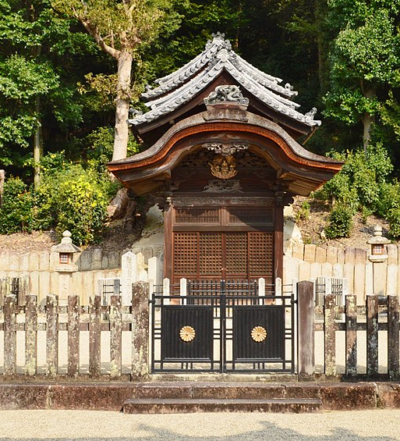
Prince Shotoku’s Tomb at Isonokami Shrine (Taishi Town, Minamikawachi District, Osaka Prefecture)
法隆寺建立の背景と意義-仏教文化の中心地
法隆寺は、飛鳥時代に聖徳太子によって建立された日本最古の木造建築物として知られています。
この寺院は、仏教文化を国家の中心に据えるという太子の政治思想を具現化したものであり、当時の政治、文化、宗教の中心地であったと言えるでしょう。
聖徳太子は、遣隋使を派遣することで中国の先進的な制度や文化を積極的に取り入れ、日本の国造りに大きな影響を与えました。
その一環として制定された冠位十二階は、官僚制度の確立に寄与し、身分ではなく実力と徳に基づく社会秩序の構築を目指したものです。
また、十七条憲法は、仏教の教えを取り入れた政治理念を示すものであり、和をもって尊しとなす精神が込められています。
これにより、太子は政治における道徳的な指針を設け、国家統治の基盤を固めたのです。
『三経義疏』は、仏教の経典である『法華経』『維摩経』『勝鬘経』の解説書であり、太子自身がその著作に関与していたとされています。
この文献を通じて、学問と宗教の融合を図り、仏教を国教として根付かせるための知的基盤を築き上げました。
法隆寺の建立は、こうした太子の政治思想と仏教への深い信仰が融合した結果であり、仏教文化の拡大と定着に大きな役割を果たしました。
寺院自体が持つ歴史的、芸術的価値は計り知れず、後世に至るまで日本の仏教文化を象徴する存在となっています。
このように、法隆寺の建立は単なる宗教施設の設立を超え、聖徳太子の政治思想や文化貢献を体現し、日本古代史における重要なマイルストーンとなったのです。
その背景と意義を深く理解することは、日本の歴史と文化を学ぶ上で非常に重要なことと言えるでしょう。
Background and Significance of the Establishment of Horyuji Temple – Center of Buddhist Culture
Horyuji Temple is renowned as Japan’s oldest wooden structure, established by Prince Shotoku during the Asuka period. This temple embodies the political ideology of Prince Shotoku, placing Buddhist culture at the heart of the nation, making it a pivotal center for politics, culture, and religion at that time.
Prince Shotoku actively incorporated advanced systems and culture from China by dispatching envoys such as the envoy to Sui China, greatly influencing Japan’s nation-building efforts. The Twelve-Level Cap and Rank System, established as part of this effort, contributed to the establishment of a bureaucratic system based on merit and virtue rather than social status.
Moreover, the Seventeen-Article Constitution reflected political principles infused with Buddhist teachings, emphasizing the spirit of harmony as precious. This provided moral guidelines for governance and strengthened the foundation of national rule.
The “Commentaries on the Three Sutras” (Sangyō Gisho), authored by Prince Shotoku, are explanatory texts on Buddhist scriptures such as the Lotus Sutra, Vimalakirti Sutra, and Śrīmālādevī Sūtra. His involvement in this work aimed to integrate scholarship with religion, laying an intellectual foundation to establish Buddhism as a state religion.
The construction of Horyuji Temple thus epitomizes the fusion of Prince Shotoku’s political ideology and deep reverence for Buddhism. It played a crucial role in the expansion and establishment of Buddhist culture in Japan, symbolizing historical and artistic value that is immeasurable and remains a cornerstone of Japan’s Buddhist culture to this day.
Therefore, the establishment of Horyuji Temple transcended mere religious construction, embodying Prince Shotoku’s political ideology and cultural contributions, marking a significant milestone in ancient Japanese history. Understanding its background and significance deeply is pivotal for studying Japan’s history and culture.
聖徳太子信仰と関連スポット
聖徳太子は、日本古代史において重要な人物として知られています。
彼の信仰は、日本全土に広がり、現代においてもその影響力は色褪せることがありません。
聖徳太子の政治的業績としては、遣隋使の派遣や冠位十二階の制度、十七条憲法の施行などが挙げられます。
これらは、当時の日本における国際関係や社会秩序の整備に大きく寄与しました。
特に法隆寺は、聖徳太子の信仰心と仏教への深い帰依を物語る場所として知られています。
法隆寺は、聖徳太子が創建したとされ、世界遺産にも登録されており、多くの人々が訪れる歴史的スポットです。
法隆寺には、聖徳太子が編纂したとされる『三経義疏』の影響も見られる仏教美術が数多く残されており、仏教文化の理解を深める上で欠かせない資料となっています。
斑鳩の里は、法隆寺を中心に展開する歴史地区であり、聖徳太子に関連する多くの遺跡や古墳が点在しています。
この地域は、聖徳太子信仰の中心地とも言える場所であり、古代日本の歴史や文化を感じることができる重要なエリアです。
法隆寺周辺エリアには、聖徳太子ゆかりの寺院や古墳が広がり、歴史を学ぶ上で貴重なスポットとなっています。
聖徳太子に関連するスポットを訪れることで、彼の歴史的背景や信仰の深さをより深く理解することができます。
現代においても、聖徳太子の思想や業績は、日本人の精神性に大きな影響を与え続けており、彼に関連するスポットは、歴史の教科書から飛び出したような興味深い体験を提供してくれます。
聖徳太子信仰の広がりと現代への影響
聖徳太子信仰は、日本の歴史において重要な役割を果たしてきました。
遣隋使として中国との交流を深め、冠位十二階によって身分制度の基礎を築き、十七条憲法を通じて政治の道徳的基盤を確立した聖徳太子は、多くの人々に尊敬されています。
法隆寺は彼の功績を今に伝える重要なスポットであり、『三経義疏』をはじめとする仏教文化の普及にも寄与しました。
聖徳太子信仰の広がりは、斑鳩の里にある法隆寺を中心に展開されています。
この地は、聖徳太子が建立したとされる世界遺産にも登録されており、彼の思想や文化的遺産を今に伝える歴史地区として知られています。
法隆寺周辺エリアでは、古墳や他の寺院を含む多くの歴史スポットが存在し、聖徳太子と関連する場所として訪れる人々に深い印象を残しています。
現代社会においても、聖徳太子の教えは価値があります。
彼の平和を愛し、教育を重んじる姿勢は、今日の日本の教育システムや社会倫理に影響を与えています。
聖徳太子信仰は、日本人のアイデンティティと密接に結びついており、彼の生きた時代を超えて尊敬と崇拝の対象となっています。
そのため、聖徳太子に関連するスポットは、歴史的なみどころだけでなく、現代の日本人にとっても重要な意味を持つ場所となっているのです。
Prince Shotoku Devotion and Related Sites
Prince Shotoku is renowned as a pivotal figure in ancient Japanese history.
His influence and reverence have spread throughout Japan, remaining influential to this day.
Among Prince Shotoku’s political achievements are the dispatch of envoys to Sui China, the establishment of the Twelve-Level Cap and Rank System, and the implementation of the Seventeen-Article Constitution.
These contributions significantly contributed to international relations and social order in ancient Japan.
Notably, Horyuji Temple stands as a testament to Prince Shotoku’s faith and deep devotion to Buddhism.
Established by him, Horyuji is registered as a World Heritage site and remains a historic spot visited by countless people.
The temple houses numerous Buddhist artworks influenced by the “Commentaries on the Three Sutras,” attributed to Prince Shotoku, serving as invaluable resources for understanding Buddhist culture.
Ikaruga Village, centered around Horyuji Temple, is a historical district dotted with many relics and ancient tombs associated with Prince Shotoku.
It serves as a focal point of Prince Shotoku devotion, offering a profound glimpse into ancient Japanese history and culture.
The surrounding area of Horyuji Temple is dotted with temples and ancient tombs connected to Prince Shotoku, serving as invaluable spots for learning history.
Visiting sites related to Prince Shotoku allows for a deeper understanding of his historical background and the depth of his faith.
Even today, Prince Shotoku’s philosophy and accomplishments continue to profoundly influence the Japanese spirit, offering fascinating experiences akin to stepping out of a history textbook.
Spread and Influence of Prince Shotoku Devotion into Modern Times
Prince Shotoku devotion has played a significant role in Japanese history.
Respected for enhancing relations with China through envoy missions, establishing the foundation of the cap and rank system, and solidifying political morality through the Seventeen-Article Constitution, Prince Shotoku’s legacy endures.
Horyuji Temple stands as a crucial site preserving his achievements and contributing to the spread of Buddhist culture, including works such as the “Commentaries on the Three Sutras.”
The spread of Prince Shotoku devotion centers around Horyuji Temple in Ikaruga Village.
This area, registered as a World Heritage site believed to be founded by Prince Shotoku, is renowned as a historical district preserving his ideologies and cultural heritage.
The vicinity of Horyuji Temple features numerous historical spots, including tombs and other temples, leaving a profound impression on visitors interested in Prince Shotoku’s legacy.
In contemporary society, Prince Shotoku’s teachings remain valuable.
His advocacy for peace and emphasis on education continue to influence Japan’s educational system and social ethics.
Prince Shotoku devotion is intimately tied to Japanese identity, revered beyond his lifetime.
Therefore, sites associated with Prince Shotoku hold significance not only as historical landmarks but also as places of profound meaning for modern-day Japanese.

Commentary on the Lotus Sutra
斑鳩の里と聖徳太子-法隆寺を中心とした歴史地区
斑鳩の里は、奈良県に位置し、日本の古代史に深く関わる地域です。
この地を象徴する存在が聖徳太子であり、法隆寺は彼の思想や功績が色濃く反映された場所として知られています。
聖徳太子は、冠位十二階や十七条憲法といった政治制度の改革を行い、遣隋使を派遣して国際関係を築くなど、日本の歴史において重要な役割を果たしました。
法隆寺は、聖徳太子の関連施設として特に有名で、世界最古の木造建築物としてユネスコの世界遺産にも登録されています。
聖徳太子が書いたとされる『三経義疏』は、法隆寺に伝わる重要な文化財の一つです。
この寺院を中心に、斑鳩の里には多くの古墳や古代寺院が点在し、古代日本の仏教文化や政治の中心地であったことを物語っています。
訪れる人々は、聖徳太子の信仰とその影響力を感じ取ることができるでしょう。
法隆寺をはじめとする歴史的なスポットは、過去への旅を可能にし、日本の歴史や文化を深く理解するための貴重な場所となっています。
聖徳太子の遺徳を今に伝える斑鳩の里は、歴史好きにはもちろん、さまざまなバックグラウンドを持つ訪問者にとっても魅力的な地区です。
法隆寺周辺エリアの歴史スポット-古墳から寺院まで
法隆寺周辺エリアは、古代日本の精神性と政治の中心地であったと言えます。
この地を訪れると、聖徳太子が生きた時代へとタイムスリップしたかのような錯覚に陥ります。
聖徳太子は、冠位十二階や十七条憲法を制定し、日本の歴史における重要な政治改革を実施した人物として知られています。
また、遣隋使を派遣し、中国との外交関係を築くことによって文化や技術の導入にも尽力しました。
法隆寺は、聖徳太子が創建したと伝えられる寺院であり、『三経義疏』の教えを広める拠点となりました。
この寺院は、斑鳩の里にある数多くの歴史スポットの中でも特に有名で、ユネスコの世界遺産にも登録されています。
法隆寺の壁画や仏像などの芸術作品は、当時の宗教観や芸術技術の高さを今に伝えています。
この地域には法隆寺だけでなく、多くの古墳が点在しており、古代日本の王権や信仰の形を垣間見ることができます。
これらの古墳は、豪族や王族の墓として築かれ、その規模や構造には当時の社会階層や権力構造が反映されています。
法隆寺周辺の古墳群を訪れることで、聖徳太子の時代を物語る歴史的背景をより深く理解することが可能です。
斑鳩の里は、聖徳太子信仰の中心地としても知られ、多くの信者が訪れる聖地です。
聖徳太子に関する伝説や教えが今もなお地域に息づいており、古代日本の精神文化を今に伝える重要な役割を果たしています。
聖徳太子に関連する遺跡や文化財を巡ることで、その影響力の大きさと、現代におけるその教えの普遍性を実感することでしょう。
法隆寺周辺エリアの歴史スポットを訪れる際には、古墳から寺院に至るまでの歴史的遺産を通して、聖徳太子の偉業と古代日本の文化を深く掘り下げてみることをお勧めします。
それぞれのスポットが持つ独自の物語を辿ることで、日本の歴史の一端に触れることができるでしょう。
Ikoma no Sato and Prince Shotoku – Historical District Centered around Horyuji Temple
Ikoma no Sato is located in Nara Prefecture and is deeply connected to ancient Japanese history.
At its heart stands Prince Shotoku, and Horyuji Temple is renowned as a place where his ideals and achievements are vividly reflected.
Prince Shotoku implemented political reforms such as the Twelve-Level Cap and Seventeen-Article Constitution, and initiated international relations by dispatching envoys to Sui China, playing a crucial role in Japan’s history.
Horyuji Temple, particularly famous as an associated site of Prince Shotoku, is registered as a UNESCO World Heritage site for being the world’s oldest wooden building.
The “San-kyo Gisho,” attributed to Prince Shotoku, is one of the important cultural assets preserved at Horyuji Temple.
Surrounding Ikoma no Sato are numerous ancient tumuli and temples, narrating its history as a hub of ancient Japanese Buddhist culture and politics.
Visitors can keenly feel Prince Shotoku’s faith and influence here.
Historical sites like Horyuji Temple enable journeys into the past, offering invaluable places to deeply understand Japan’s history and culture.
Ikoma no Sato, preserving Prince Shotoku’s virtues, is an appealing district not only for history enthusiasts but also for visitors from diverse backgrounds.
Historical Spots around Horyuji Temple – From Tumuli to Temples
The area around Horyuji Temple can be considered the spiritual and political center of ancient Japan.
Visiting here gives a sense of slipping back into Prince Shotoku’s era.
Prince Shotoku, known for implementing significant political reforms like the Twelve-Level Cap and Seventeen-Article Constitution, actively fostered cultural and technological exchanges by dispatching envoys to Sui China.
Horyuji Temple, said to have been founded by Prince Shotoku, became a base for spreading teachings such as the “San-kyo Gisho” and is especially famous among numerous historical sites in Ikoma no Sato, registered as a UNESCO World Heritage site.
Artistic works at Horyuji Temple, such as wall paintings and Buddhist statues, convey the religious views and artistic skills of that era.
The region is dotted not only with Horyuji Temple but also with numerous tumuli, offering glimpses into the forms of royal authority and faith in ancient Japan.
Visiting these tumuli around Horyuji Temple allows for a deeper understanding of the historical context of Prince Shotoku’s era.
Ikoma no Sato is known as a center of Prince Shotoku’s faith, attracting many believers.
Legends and teachings related to Prince Shotoku still resonate in the area, playing a crucial role in transmitting the spiritual culture of ancient Japan to the present day.
Exploring the relics and cultural assets related to Prince Shotoku, visitors will grasp the magnitude of his influence and the universality of his teachings in contemporary times.
When visiting historical spots around Horyuji Temple, I recommend delving deeply into the historical heritage from tumuli to temples, each spot unfolding its unique narrative, allowing one to touch a part of Japan’s history.
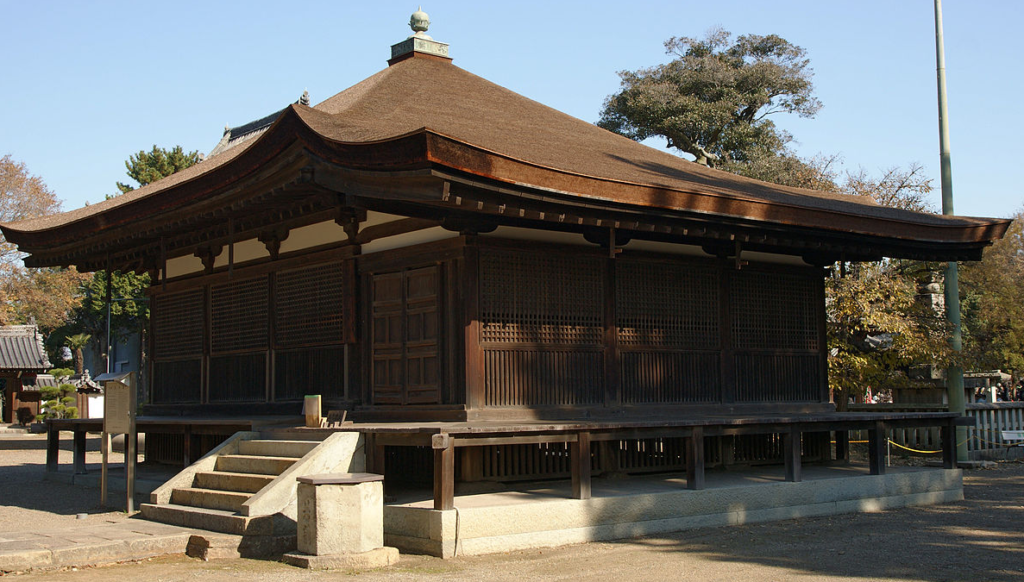
Prince Hall (Kakurinji Temple)
聖徳太子の意外なエピソードと伝説
聖徳太子という名前は、日本史の教科書で必ずと言っていいほど登場する人物です。
しかし、その実像には意外なエピソードや伝説が数多く存在します。
今回は、そんな聖徳太子にまつわる知られざる話を紐解いていきましょう。
まず、聖徳太子の政治的功績には目を見張るものがあります。
彼は遣隋使を派遣し、外交の扉を開いたことで知られています。
この外交政策は、当時の日本と中国との関係を大きく前進させました。
また、冠位十二階の制定により、身分ではなく才能に基づく社会システムの基礎を築きました。
さらに、十七条憲法を通じて、政治の道徳的基盤を確立しようと試みたのです。
信仰面では、聖徳太子は仏教を国教として推進しました。
法隆寺の建立はその代表的な例であり、仏教文化の根付きを物語っています。
また、『三経義疏』の撰述により、仏教哲学の普及にも尽力しました。
聖徳太子の人物像を掘り下げると、彼の孝養に関するエピソードが浮かび上がります。
孝養とは、親に対する尊敬と奉仕を意味します。
彼はこの孝養を実践し、後世に孝養像として称えられました。
また、勝鬘経講讃像としても描かれることがあり、仏教への深い信仰心が表現されています。
聖徳太子の生涯は、単なる政治家や仏教徒としての側面だけでなく、多くのエピソードや伝説に彩られています。
これらの話は、彼の人間性や時代を超えた影響力を伝える貴重な資料となっています。
聖徳太子の足跡をたどることは、日本の歴史や文化を深く理解するための鍵となるでしょう。
聖徳太子のびっくりエピソード-歴史の裏話
聖徳太子は、飛鳥時代の政治家であり、後の世に仏教の伝播者としても知られています。
彼の生涯は数多くのエピソードに彩られ、中でも驚くべき話は今も語り継がれています。
例えば、幼い頃から異常なほどの記憶力を持ち、一度聞いた経文を決して忘れなかったといわれています。
また、遣隋使として隋に派遣された際には、その博識ぶりが中国側に強い印象を与えました。
冠位十二階の制定者としても知られる聖徳太子は、身分に関係なく能力に応じた社会的地位を与えることで、当時の社会制度に革新をもたらした人物です。
彼の政治理念は、十七条憲法にも色濃く反映されており、公正な政治を目指した内容が記されています。
法隆寺の創建者としても名高い彼は、仏教文化の普及に尽力しました。
法隆寺には、聖徳太子に関連する宝物や彼が影響を受けたとされる仏教美術が数多く保存されています。
『三経義疏』の著者としても知られ、仏教学の発展に貢献したことは、学問の世界でも高く評価されています。
聖徳太子の信仰心は深く、孝養像や勝鬘経講讃像など、彼を題材にした仏教美術も多く作られました。
これらの作品は、後世の人々に彼の信仰の姿勢を伝えるアイコンとなっています。
聖徳太子の生涯や功績は、日本の歴史において非常に重要な位置を占めており、彼にまつわるエピソードや伝説は、今なお多くの人々に興味を持たれています。
その驚くべき記憶力や政治理念、仏教への深い信仰心は、今日においても多くの教訓を私たちに与えてくれるのです。
The Surprising Episodes and Legends of Prince Shotoku
Prince Shotoku is a figure who prominently appears in Japanese history textbooks.
However, behind his historical image lie numerous surprising episodes and legends.
Let’s delve into some lesser-known stories surrounding Prince Shotoku this time.
Firstly, Prince Shotoku’s political achievements are remarkable.
He is known for dispatching diplomatic missions to Sui China, thus significantly advancing Japan’s relations with China at the time.
Moreover, his establishment of the Twelve Level Cap and the Seventeen Article Constitution laid the foundation for a social system based on talent rather than birth.
In the realm of faith, Prince Shotoku promoted Buddhism as the state religion.
The founding of Horyuji Temple exemplifies this, illustrating the deep-rootedness of Buddhist culture.
Additionally, his compilation of the “Commentaries on the Three Sutras” contributed extensively to the spread of Buddhist philosophy.
Exploring Prince Shotoku’s persona further reveals anecdotes related to his filial piety.
Filial piety refers to respect and service towards parents.
He practiced this virtue and was revered for it as an epitome of filial piety in later times.
Also depicted as the Kannon Bodhisattva in the Sutra of Bodhisattva Ksitigarbha’s Fundamental Vows, his profound faith in Buddhism is further expressed.
Prince Shotoku’s life is colored not only by his roles as a politician and Buddhist but also by many episodes and legends.
These stories serve as valuable sources conveying his humanity and enduring influence across eras.
Tracing the footsteps of Prince Shotoku will undoubtedly unlock keys to a deeper understanding of Japan’s history and culture.
The Surprising Episodes of Prince Shotoku – Untold Stories of History
Prince Shotoku was a political figure in the Asuka period and is also known as a propagator of Buddhism in later years.
His life is adorned with numerous episodes, among which some remarkable tales are still handed down today.
For instance, it is said that from a young age, he possessed an extraordinary memory, never forgetting sutras once heard.
Moreover, when dispatched as an envoy to Sui China, his vast knowledge left a strong impression on the Chinese side.
Prince Shotoku, known as the creator of the Twelve-Level Cap, introduced a revolutionary social system based on abilities rather than social status.
His political ideals are strongly reflected in the Seventeen Article Constitution, aiming for just governance.
Highly regarded as the founder of Horyuji Temple, he dedicated himself to the propagation of Buddhist culture.
Horyuji Temple houses numerous treasures associated with Prince Shotoku and Buddhist art that influenced him.
Known as the author of the “Commentaries on the Three Sutras,” he made significant contributions to the development of Buddhist studies, highly esteemed in the academic world.
Deeply devout, Prince Shotoku’s faith is evident in artistic representations such as statues depicting filial piety and the praises of the Sutra of Bodhisattva Ksitigarbha.
These works serve as icons conveying his devotion to future generations.
Prince Shotoku’s life and achievements hold a significant place in Japanese history, and the episodes and legends surrounding him continue to captivate many.
His remarkable memory, political ideals, and profound faith in Buddhism continue to offer us many lessons even today.
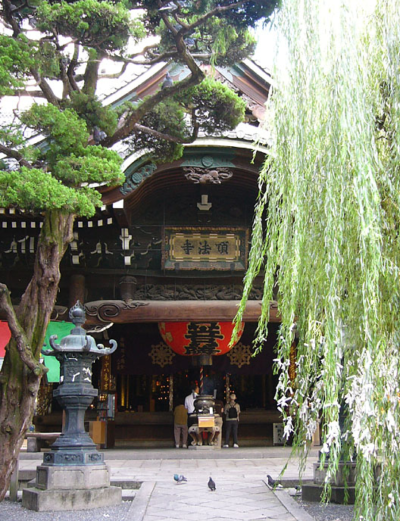
Rokkaku Hall (Chohoji Main Hall)
聖徳太子孝養像と勝鬘経講讃像-信仰のアイコン
聖徳太子は、日本史上における最も重要な人物の一人であり、その生涯は多くの伝説に彩られています。
彼は遣隋使として日本と中国の外交関係を築き、冠位十二階を制定して社会の位階制度を整備しました。
また、十七条憲法によって政治の基本を定め、法隆寺をはじめとする仏教文化の発展に寄与しました。
『三経義疏』の著者としても知られ、仏教学の進展に貢献したことは広く認識されています。
聖徳太子孝養像は、彼の仏教に対する篤い信仰心を表すもので、日本全国の寺院や美術館で尊崇されています。
この像は、孝養の精神を体現しており、彼が如何に人々に尊敬されているかを示しています。
一方、勝鬘経講讃像では、聖徳太子が経典を説く姿が描かれており、彼の仏教教育における役割を強調しています。
これらの像は、信仰のアイコンとして、また日本の仏教美術の逸品として、多くの人々に影響を与え続けています。
聖徳太子のエピソードには驚くべきものが多く、彼の知識と慈悲は今日に至るまで語り継がれています。
彼の政治的業績だけでなく、仏教への深い帰依も、日本文化と歴史において重要な役割を果たしています。
聖徳太子孝養像と勝鬘経講讃像は、彼の多面的な人格と功績を色濃く反映したものであり、歴史を越えて尊敬される理由を物語っています。
Iconography of Prince Shotoku: Images of Filial Piety and the Sutra Recitation Scene
Prince Shotoku stands as one of Japan’s most pivotal historical figures, his life embellished with numerous legends.
As envoy to Sui China, he established diplomatic ties and instituted the Twelve-Level Cap and Rank System, solidifying Japan’s social hierarchy.
His Seventeen-Article Constitution laid foundational principles for governance, while fostering Buddhist culture, notably through the founding of Horyuji Temple.
Known as the author of the “Commentaries on the Three Sutras,” he significantly advanced Buddhist scholarship.
The image of Prince Shotoku in filial piety embodies his deep devotion to Buddhism, revered in temples and museums across Japan.
This portrayal exemplifies his reverence for parental care, underscoring his widespread admiration.
Conversely, the Sutra Recitation Scene depicts him expounding scriptures, emphasizing his role in Buddhist education.
These images serve as icons of faith and treasured artifacts of Japanese Buddhist art, continuing to influence many.
Prince Shotoku’s life is replete with remarkable episodes, his wisdom and compassion enduring in tales today.
Beyond his political achievements, his profound dedication to Buddhism remains pivotal in Japanese culture and history.
The images of Prince Shotoku in filial piety and sutra recitation reflect his multifaceted personality and enduring accomplishments, narrating reasons for enduring reverence across history.
斑鳩町とその周辺の探訪
斑鳩町は、奈良県の北部に位置し、古代日本の歴史に深く関わる地として知られています。
この地を訪れる旅行者は、法隆寺iセンターやJR法隆寺駅観光案内所で、観光情報を得たり、地図を手に入れたりすることができます。
そこから足を延ばせば、聖徳太子に関わる多くの史跡や文化財が点在しており、日本の歴史に触れることができます。
特に法隆寺は、世界遺産にも登録されている斑鳩町の象徴的な存在です。
聖徳太子が推進した仏教文化の中心地であり、冠位十二階や十七条憲法など、彼の政治的・社会的な業績を偲ぶことができる場所となっています。
また、『三経義疏』をはじめとする聖徳太子ゆかりの文献に関する知識を深めることもできるでしょう。
斑鳩町の周辺には、遣隋使が使われた際のルートや、聖徳太子が影響を与えた地域が広がっており、歴史探訪には最適な環境です。
近隣の歴史的名所への訪問も推奨されますが、それらの場所へのアクセス方法や営業時間などは事前に確認しておくと良いでしょう。
斑鳩町とその周辺を訪れることは、古代日本の政治や文化、宗教についての理解を深める貴重な体験となります。
聖徳太子の遺産を現代に伝えるこれらの場所は、日本だけでなく世界の人々にとっても重要な価値を持っています。
Exploring Ikaruga Town and Its Surroundings
Ikaruga Town, situated in the northern part of Nara Prefecture, is renowned for its deep connection to ancient Japanese history.
Travelers visiting this area can obtain tourist information and maps at places like the Horyuji Temple Center and the JR Horyuji Station Tourist Information Office.
Venturing further, visitors encounter numerous historical sites and cultural treasures associated with Prince Shotoku, offering insights into Japan’s history.
Notably, Horyuji Temple stands as a symbolic presence in Ikaruga Town, registered as a UNESCO World Heritage site.
It serves as a focal point of Buddhist culture promoted by Prince Shotoku, where one can reflect upon his political and social achievements such as the Twelve-Level Cap and Rank System and the Seventeen-Article Constitution.
Moreover, visitors can deepen their knowledge about Prince Shotoku through texts like the “Commentaries on the Three Sutras.”
The surrounding areas of Ikaruga Town encompass routes used by the envoy to Sui China and regions influenced by Prince Shotoku, making it an ideal environment for historical exploration.
While visiting nearby historical landmarks is recommended, it’s advisable to check ahead for access methods and operating hours.
Exploring Ikaruga Town and its surroundings offers a valuable experience to deepen understanding of ancient Japanese politics, culture, and religion.
These sites, which preserve the legacy of Prince Shotoku, hold significant value not only for Japan but also for people worldwide.
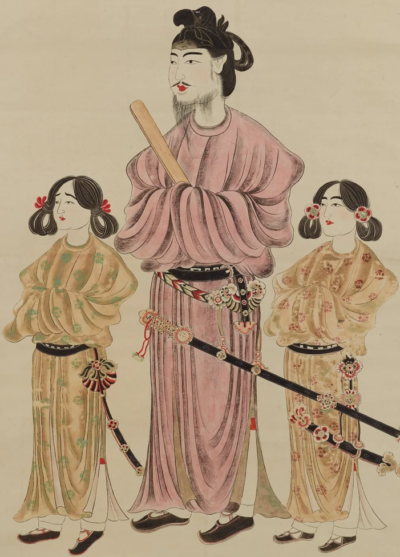
Portrait Painting Presumed to Depict Prince Shotoku: “The Tang Dynasty Edition” (There is also a theory that it depicts someone else, drawn in the mid-8th century)
斑鳩町観光協会の案内-法隆寺iセンターとJR法隆寺駅観光案内所
斑鳩町は、奈良県にある歴史ある地域で、特に聖徳太子と深い関係があります。
法隆寺iセンターとJR法隆寺駅観光案内所は、この地を訪れる旅行者にとって貴重な情報源となっています。
法隆寺iセンターでは、法隆寺や聖徳太子に関する展示物が多数あり、訪れる人々に斑鳩町の歴史や文化を紹介しています。
また、JR法隆寺駅観光案内所も、地元の観光情報を提供し、訪問者が町を探索する際の手助けをしています。
聖徳太子は、冠位十二階や十七条憲法を制定し、日本の政治体系に大きな影響を与えた人物です。
法隆寺は、聖徳太子が建立に関わったとされる世界最古の木造建築物群として知られており、ユネスコの世界遺産にも登録されています。
聖徳太子が編纂したとされる『三経義疏』は、仏教学の基礎をなす重要な文献であり、法隆寺にはその精神が今も息づいています。
遣隋使として中国に派遣された使節団は、当時の先進文化を日本にもたらし、斑鳩町の文化的発展に寄与しました。
斑鳩町を訪れることは、これらの歴史的背景を体感し、学ぶ絶好の機会です。
法隆寺iセンターやJR法隆寺駅観光案内所では、これらの歴史的事実や文化遺産について、詳しく知ることができます。
また、これらの施設では地元のイベント情報も提供しており、訪問者は斑鳩町の現代の魅力も体験することができます。
斑鳩町は、歴史と現代が交差する場所であり、その魅力を伝えるために法隆寺iセンターとJR法隆寺駅観光案内所は不可欠です。
地域の歴史を深く理解し、充実した観光体験を求める旅行者にとって、これらの施設は旅の出発点となるでしょう。
斑鳩町と周辺の≪聖徳太子≫関連スポット-一歩足を延ばして訪れるべき場所
斑鳩町は、奈良県に位置し、日本の歴史において重要な役割を果たした聖徳太子に関連する多くのスポットが点在しています。
法隆寺は、聖徳太子が建立したと伝えられ、世界遺産にも登録されている名刹です。
壮大な伽藍と精緻な仏像が、古代日本の仏教文化の精華を今に伝えています。
遣隋使としての使節団の派遣や、冠位十二階の制度を創設し、日本の政治体系に大きな影響を与えた聖徳太子ですが、彼が制定したとされる十七条憲法は、日本最初の憲法として知られ、政治の基本となる倫理規範を示しています。
これらの歴史的な出来事は、斑鳩町周辺を訪れる旅行者に深い洞察を与えるものです。
また、聖徳太子が注力した仏教教育の一環として、「三経義疏」があります。
これは、仏教経典の解説書であり、当時の日本における仏教の教えを広めるために重要な役割を果たしました。
法隆寺には、聖徳太子に関連する多くの文化財が保存されており、仏教の教えや歴史を学ぶ上で貴重な資料となっています。
斑鳩町観光協会では、これらのスポットを巡るガイドや案内を提供しており、法隆寺iセンターやJR法隆寺駅観光案内所を訪れることで、より深く聖徳太子の足跡をたどることができます。
周辺には他にも歴史的な名所があり、ちょっと足をのばすだけで、日本の古代史に触れることができるのです。
斑鳩町とその周辺は、聖徳太子をはじめとする古代日本の歴史に興味がある方にとって、見逃せない場所です。
一歩足を延ばして訪れることで、日本の歴史の一端に触れ、豊かな文化遺産を体験することができるでしょう。
Ikaruga Town Tourism Association Guide – Horyu-ji Center and JR Horyu-ji Station Tourist Information Office
Ikaruga Town, located in Nara Prefecture, is a region steeped in history, particularly renowned for its deep connection to Prince Shotoku.
The Horyu-ji Center and JR Horyu-ji Station Tourist Information Office serve as invaluable sources of information for travelers visiting this area.
At the Horyu-ji Center, visitors can explore numerous exhibits related to Horyu-ji and Prince Shotoku, offering insights into the history and culture of Ikaruga Town.
Similarly, the JR Horyu-ji Station Tourist Information Office provides local tourism information and aids visitors in exploring the town.
Prince Shotoku, known for establishing the Twelve-Level Cap and the Seventeen-Article Constitution, significantly influenced Japan’s political system.
Horyu-ji is renowned as the world’s oldest wooden architectural complex associated with Prince Shotoku’s construction efforts, listed as a UNESCO World Heritage site.
The “Sangyo Gisho,” attributed to Prince Shotoku, is a crucial document forming the foundation of Buddhist studies, and its spirit remains vibrant within Horyu-ji.
The envoy dispatched to China during the Sui Dynasty brought advanced cultural influences back to Japan, contributing to the cultural development of Ikaruga Town.
Visiting Ikaruga Town offers a prime opportunity to experience and learn from these historical backgrounds.
At the Horyu-ji Center and JR Horyu-ji Station Tourist Information Office, visitors can delve deeper into these historical facts and cultural heritage.
Additionally, these facilities provide information on local events, allowing visitors to experience the contemporary charm of Ikaruga Town.
Ikaruga Town stands at the intersection of history and modernity, making the Horyu-ji Center and JR Horyu-ji Station Tourist Information Office indispensable for conveying its allure.
For travelers seeking a deep understanding of the region’s history and a fulfilling tourism experience, these facilities serve as the starting point for their journey.
Prince Shotoku-related Spots in and Around Ikaruga Town – Places Worth Visiting Just a Short Walk Away
Ikaruga Town, located in Nara Prefecture, hosts numerous spots associated with Prince Shotoku, who played a pivotal role in Japan’s history.
Horyu-ji, reportedly founded by Prince Shotoku, is a renowned temple complex listed as a UNESCO World Heritage site.
Its magnificent halls and exquisite Buddha statues convey the essence of ancient Japanese Buddhist culture.
Prince Shotoku, who established the envoy to the Sui Dynasty and the Twelve-Level Cap system, exerted significant influence on Japan’s political structure. His Seventeen-Article Constitution, considered Japan’s first constitution, embodies fundamental ethical norms for governance.
These historical events offer profound insights to travelers exploring the surroundings of Ikaruga Town.
Additionally, as part of his efforts in Buddhist education, Prince Shotoku compiled the “Sangyo Gisho,” a commentary on Buddhist scriptures that played a crucial role in spreading Buddhist teachings in Japan.
Horyu-ji houses many cultural assets associated with Prince Shotoku, serving as invaluable resources for learning about Buddhist teachings and history.
The Ikaruga Town Tourism Association provides guides and information for visiting these spots, allowing visitors to trace Prince Shotoku’s footsteps more deeply through visits to the Horyu-ji Center and JR Horyu-ji Station Tourist Information Office.
The surrounding area boasts other historical landmarks, making it easy to delve into Japan’s ancient history.
Ikaruga Town and its surroundings are essential places not to be missed for anyone interested in ancient Japanese history, particularly figures like Prince Shotoku.
By taking a short walk to visit, you can touch upon a slice of Japan’s history and experience its rich cultural heritage.
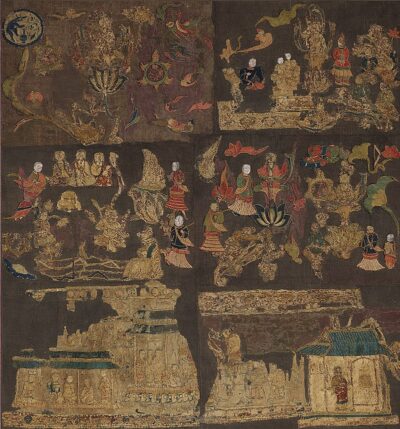
“Tenju Kokuju”
ちょっと足をのばせば…-近隣の歴史的名所
歴史の息づく斑鳩町を訪れたなら、法隆寺iセンターやJR法隆寺駅観光案内所で情報を得た後、是非とも周辺の名所を巡る旅に出かけましょう。
斑鳩町は、聖徳太子にゆかりの深い場所であり、その歴史的背景を感じながら歩くだけで、時代を超えた旅に出たような気分になれます。
まず訪れたいのが、日本最古の木造建築として知られる法隆寺です。
聖徳太子が建立に関わったとされるこの寺院は、彼の思想が色濃く反映された場所であり、遣隋使を派遣した政治的背景や、冠位十二階、十七条憲法といった制度の理解を深める手がかりを提供してくれます。
また、法隆寺には『三経義疏』の教えが刻まれており、聖徳太子の仏教への深い理解と、それを国政に生かそうとした姿勢がうかがえます。
散策をしながら、当時の日本の文化や政治に触れることができるでしょう。
斑鳩町を少し足を伸ばせば、さらに多くの歴史的名所が待っています。
聖徳太子が遺した足跡をたどり、日本の歴史と文化の豊かさを肌で感じることができるはずです。
静かな時間を過ごしながら、歴史の一片に触れることで、新たな発見や学びがあるかもしれません。
Venture a Bit Further… – Nearby Historical Landmarks
When visiting the historically rich town of Ikaruga, start by gathering information at the Horyuji Center and the JR Horyuji Station Tourist Information Center, then embark on a journey to explore the surrounding landmarks.
Ikaruga is deeply connected to Prince Shotoku, and simply walking through its historical background can make you feel like you’ve embarked on a journey through time.
First and foremost, you’ll want to visit Horyuji, known as Japan’s oldest wooden structure. This temple, where Prince Shotoku is believed to have been involved in its construction, reflects his ideology vividly and provides clues to understanding the political backdrop of sending diplomatic missions to Sui China, as well as the systems he established like the Twelve-Level Cap and the Seventeen-Article Constitution.
Moreover, Horyuji contains teachings from the “Sangyo Gisho,” showcasing Prince Shotoku’s profound understanding of Buddhism and his efforts to integrate it into national politics.
Strolling around, you’ll be able to touch upon Japan’s culture and politics of the time.
Just a short jaunt from Ikaruga, there are even more historical landmarks waiting to be discovered.
By tracing the footsteps left by Prince Shotoku, you’ll surely experience the richness of Japan’s history and culture firsthand.
Spending quiet moments while touching upon a slice of history might lead to new discoveries and learnings.
聖徳太子を今に生かす-現代社会への教訓とインスピレーション
聖徳太子は、日本史上において重要な役割を果たした人物として広く知られています。
彼は政治的にも宗教的にも著しい影響を与えた存在であり、その遺した教えは現代にも通じる価値を持っています。
冠位十二階の制度を創設し、身分ではなく実力や徳を重んじる社会の実現を目指しました。
また、遣隋使を派遣し、当時の最先端文化を日本に取り入れることで、国際的な視野を持つことの重要性を示しました。
十七条憲法は、聖徳太子が提唱した政治的な理念であり、和を尊び、公正な統治を求める内容が記されています。
これは、現代社会においても応用できる普遍的な価値観を提供しており、社会の調和と公正を目指す指針となり得ます。
法隆寺は、彼の政治的および宗教的な理念を体現する建築物として、今日に至るまで多くの人々に親しまれています。
『三経義疏』は、聖徳太子が仏教経典の解説を行ったもので、彼の深い仏教理解と教育への貢献を示しています。
聖徳太子の教えを現代社会へ適用することは、私たちが直面する多くの問題に対する新たな視点や解決策を提供することができます。
彼の業績を学び直すことは、歴史からの教訓を再発見し、現代社会に生かすための重要なステップです。
今日の日本社会において、聖徳太子の理念は、公正と調和を求める現代の価値観と密接に結びついています。
彼が築いた基盤の上に立って、私たちは持続可能で平和な社会を目指すことができるのです。
聖徳太子の教えからインスピレーションを受け、現代社会における新たな道を切り開くことが、私たちの責任であり使命であると言えるでしょう。
Living the Legacy of Prince Shotoku – Lessons and Inspiration for Modern Society
Prince Shotoku is widely recognized as a pivotal figure in Japanese history, renowned for his significant political and religious influence. His teachings continue to hold relevance in today’s world.
He established the Twelve-Level Cap and aimed for a society that valued merit and virtue over mere status, both politically and socially.
Moreover, by sending diplomatic missions to Sui China, he emphasized the importance of adopting advanced international cultures, broadening Japan’s global outlook.
The Seventeen-Article Constitution, advocating harmony and just governance, reflects Prince Shotoku’s political ideals and offers universal values applicable even in contemporary society, serving as a guidepost for achieving social harmony and justice.
Horyuji Temple, embodying his political and religious visions, remains cherished by many today.
The “Sangyo Gisho,” where Prince Shotoku expounded on Buddhist scriptures, underscores his deep understanding of Buddhism and his contributions to education.
Applying Prince Shotoku’s teachings to modern society can provide fresh perspectives and solutions to the myriad challenges we face.
Revisiting his achievements is a crucial step toward rediscovering lessons from history and applying them to benefit contemporary society.
In today’s Japanese society, Prince Shotoku’s ideals are closely intertwined with modern values that seek justice and harmony.
Standing on the foundation he laid, we can strive towards a sustainable and peaceful society.
Drawing inspiration from Prince Shotoku’s teachings, paving new paths in contemporary society is not just a responsibility but our mission.
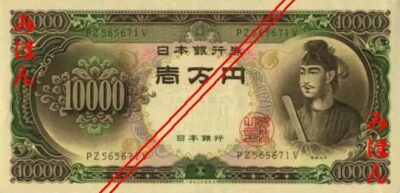
Portrait of Prince Shotoku on the 10,000 Yen Note (C Series)
聖徳太子の教えの現代への適用
聖徳太子の教えは、今日の日本社会においても重要な意味を持ち続けています。
彼が遺した十七条憲法は、和をもって尊しとする日本の精神文化の原点とも言えるものです。
この憲法には、集団の調和を重んじる姿勢が明確に示されており、現代の企業組織やコミュニティ運営においても参考になる考え方が含まれています。
また、冠位十二階の制度を導入したことにより、彼は社会の階層化を明確にし、才能と実績に基づく社会の動きを促したのです。
これは、現代の人事評価システムやキャリア開発においても有益な示唆を提供しています。
法隆寺や『三経義疏』を通じて、聖徳太子が仏教文化の普及に尽力したことは、精神性の高い文化の重要性を現代人に教えてくれます。
仏教哲学の普遍的な価値観は、多様性が求められる現代社会において、人々の心の安定や倫理観の確立に寄与することができるでしょう。
遣隋使を派遣したことで、国際交流の先駆けとなった聖徳太子の外交政策は、グローバル化が進む現代においても、異文化理解と協調の精神を重視する上で非常に有効なモデルと言えます。
他国との対話を通じて、相互理解を深め、共存共栄の道を探ることは、現代の国際関係においても不可欠な姿勢です。
聖徳太子の教えを現代に適用することで、私たちは歴史から学び、未来をより良いものにするためのヒントを得ることができます。
彼の思想と実践は、時代を超えて日本人の生き方や価値観に影響を与え続けているのです。
Applying Prince Shotoku’s Teachings to the Modern World
Prince Shotoku’s teachings continue to hold significant meaning in today’s Japanese society.
His Seventeen-Article Constitution, which emphasizes harmony, can be considered the cornerstone of Japan’s spiritual and cultural essence.
This constitution clearly advocates for harmony within groups, offering insights that are relevant in managing modern corporate organizations and community dynamics.
Moreover, his introduction of the Twelve-Level Cap and Rank System established clear social hierarchies, promoting societal movement based on talent and achievement. This has valuable implications for modern performance evaluation systems and career development.
Through institutions like Horyuji Temple and his work on the “Commentaries on the Three Sutras,” Prince Shotoku’s efforts in spreading Buddhist culture teach modern people the importance of spiritually enriched cultures.
The universal values of Buddhist philosophy can contribute to stabilizing people’s minds and establishing ethical perspectives in today’s diverse society.
Prince Shotoku’s diplomatic policies, exemplified by sending the envoy to Sui Dynasty China, laid the groundwork for international exchanges and remain effective models in today’s era of globalization, emphasizing understanding of diverse cultures and cooperative spirits.
Enhancing mutual understanding through dialogue with other nations is essential for fostering coexistence and mutual prosperity in contemporary international relations.
Applying Prince Shotoku’s teachings to the present allows us to learn from history and gain insights to create a better future.
His thoughts and practices continue to influence the way Japanese people live and their values across generations.
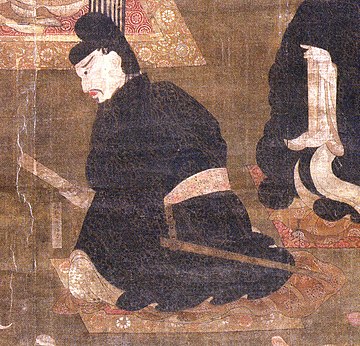
Soga no Umako: Depiction from the Shōtoku Taishi Shōman-kyō Kōsan-zu at Hōryū-ji Temple
学び直しとしての歴史-聖徳太子の業績をどう評価するか
聖徳太子は、日本史上、最も尊敬される人物の一人として知られています。
彼の業績は、日本の政治、文化、宗教の基礎を築いたとされ、その影響は現代にも色濃く残っています。
特に、冠位十二階の制度は、身分制度における能力主義の導入として、後の時代に大きな影響を与えました。
また、遣隋使を派遣したことで、国際的な外交関係を築き、中国の先進文化を日本にもたらすきっかけを作りました。
聖徳太子が制定したとされる十七条憲法は、政治理念だけでなく、倫理観や人々の生き方にも大きな示唆を与える内容です。
これは、和を以て貴しとなすという考え方を基本とし、公正で道徳的な政治を目指すことを説いています。
この憲法の精神は、現代社会においても有効な指針であると考えられます。
法隆寺は、聖徳太子が建立したと伝えられる世界最古の木造建築物であり、彼の仏教への深い信仰を物語っています。
この寺院は、仏教芸術の傑作として世界遺産にも登録されており、聖徳太子の文化的遺産としての価値を今に伝えています。
『三経義疏』は、聖徳太子が仏教経典の解釈を行ったものであり、日本仏教の基礎を築く上で重要な役割を果たしました。
この文献は、彼の仏教に対する深い理解と、その教えを広める意志を示しています。
聖徳太子の業績を評価する際には、彼が残した文化的、政治的、宗教的な遺産を総合的に見る必要があります。
これらの業績は、今日の日本社会においても大きな意味を持ち、学び直しとしての歴史の一環として、私たちに多くの教訓を与えています。
聖徳太子の教えを現代に生かすことは、社会の発展において重要な役割を果たすと言えるでしょう。
Reevaluating History: Assessing the Achievements of Prince Shotoku
Prince Shotoku is widely revered as one of the most esteemed figures in Japanese history.
His accomplishments are credited with laying the foundation of Japan’s politics, culture, and religion, leaving a profound impact that resonates even today.
In particular, his establishment of the Twelve-Level Cap and Rank System introduced meritocracy into Japan’s class structure, influencing later periods significantly.
Moreover, dispatching diplomatic missions to Sui China facilitated international relations and brought advanced Chinese culture to Japan.
The Seventeen-Article Constitution, attributed to Prince Shotoku, not only outlined political principles but also provided significant insights into ethics and societal conduct.
It emphasized the importance of harmony and promoted just and moral governance, principles that continue to serve as valuable guidelines in contemporary society.
Horyu-ji Temple, reputedly founded by Prince Shotoku, stands as the world’s oldest wooden structure, embodying his deep faith in Buddhism.
This temple is a masterpiece of Buddhist art and recognized as a UNESCO World Heritage site, preserving the cultural legacy of Prince Shotoku.
The “Commentaries on the Three Sutras,” authored by Prince Shotoku, played a crucial role in establishing the foundations of Japanese Buddhism, reflecting his profound understanding and commitment to spreading its teachings.
When evaluating Prince Shotoku’s achievements, it is essential to consider his cultural, political, and religious legacies comprehensively.
These contributions hold significant relevance in contemporary Japanese society, offering us valuable lessons as we reexamine history.
Applying Prince Shotoku’s teachings to the present can play a crucial role in societal development and progress.

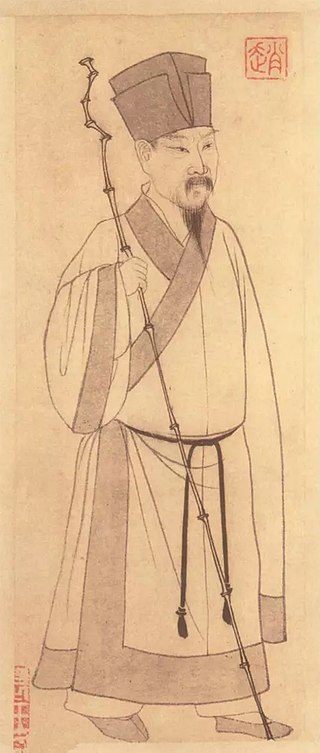
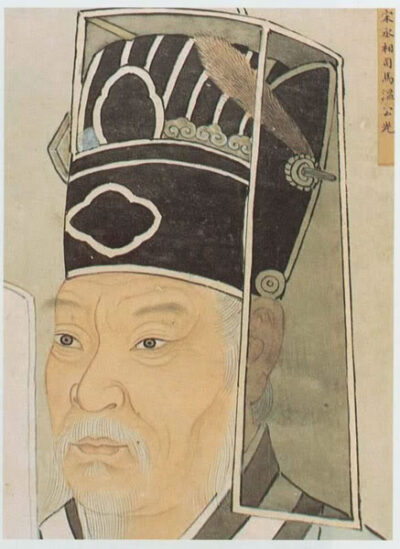
Warning: Undefined variable $comment_form_sns_tags in /home/ktsky/philosophy-kayak.com/public_html/wp-content/themes/shaper/comments.php on line 27
1件のコメントがあります